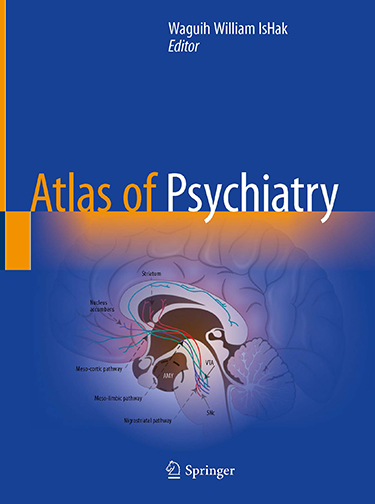Discoveries
Psychiatry for Visual Learners
May 30, 2023 Cassie Tomlin

In childhood, Waguih William IsHak, MD, marveled over his OB-GYN father’s copy of Gray's Anatomy—its illustrations and definitions made the human body seem easy to learn.
Now Dr. IsHak, vice chair of Education and Research in the Department of Psychiatry and Behavioral Neurosciences at Cedars-Sinai, has edited Atlas of Psychiatry (Springer Nature International, 2023), the first and only visual reference guide to cover the field of psychiatry as a whole. The encompassing overview employs both original and licensed illustrations, images, tables and diagrams to describe the etiology, pathophysiology, phenomenology and treatment of the wide span of psychiatric disorders.

Introductory chapters cover epidemiology, neurobiology, neuroimaging and psychosocial science, including the evolution of psychotherapeutic theories and methods. A cogent timeline spans the first mention of depression—in ancient Egypt—through the violence and misogyny of mental illness classification in the Middle Ages, and up to the development—in the 1990s—of functional MRI, advanced therapeutics and the mindfulness movement of today.
Dr. IsHak’s seventh published text features preeminent leaders in the field—including seven contributors from Cedars-Sinai.
While the Diagnostic and Statistical Manual of Mental Disorders (DSM), offers clinical tools to help guide diagnosis, Atlas of Psychiatry elaborates on the biological, psychological and social elements that guide the process of psychiatric evaluation and treatment. The book will appeal to visual learners of all backgrounds and can serve as a quick reference for both clinicians and patients, Dr. IsHak says.
Its final chapter offers insight into the future of the field: potential biomarkers for diagnosis, digital tools for patient monitoring, newer interventions in psychotherapy and psychopharmacology, and innovative ways to overcome barriers to accessing care.
Medical care still operates with a limited understanding of the mind; prevention and treatment of psychiatric illness lag. As the atlas states, “An ongoing struggle facing the field is the question of how society can unlearn centuries worth of deviance, exclusion and abandonment in a continuing battle to increase the acceptance and accessibility of mental health.”
“There is significant science to psychiatry in addition to art, and there is substantial potential to relieve human suffering,” Dr. IsHak says.



